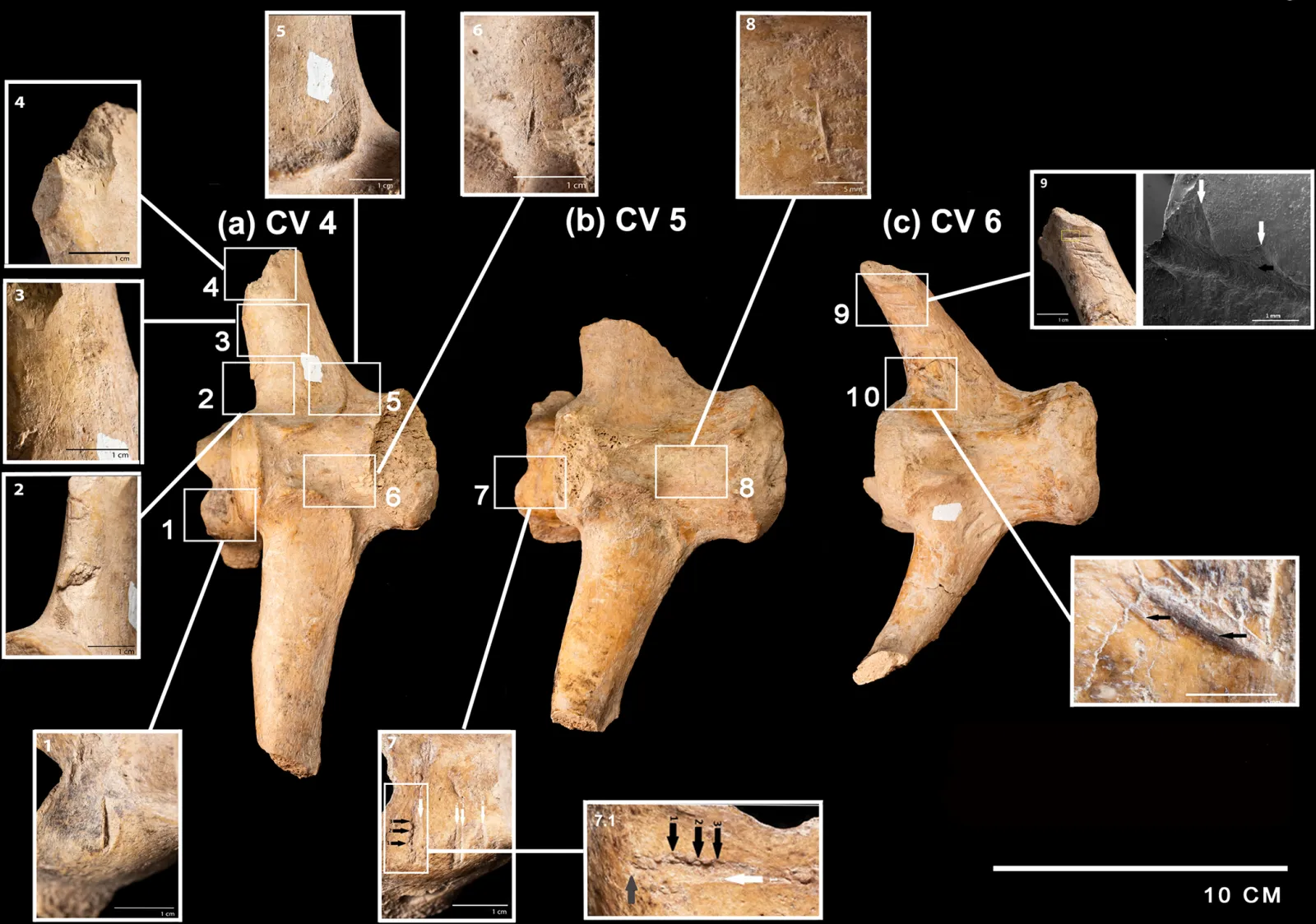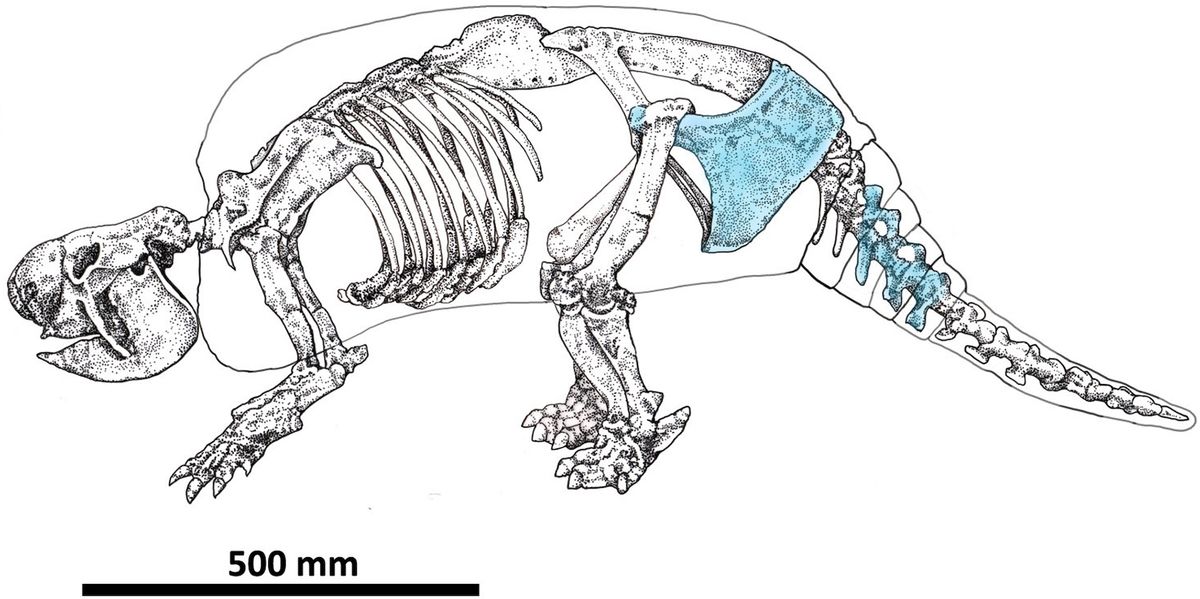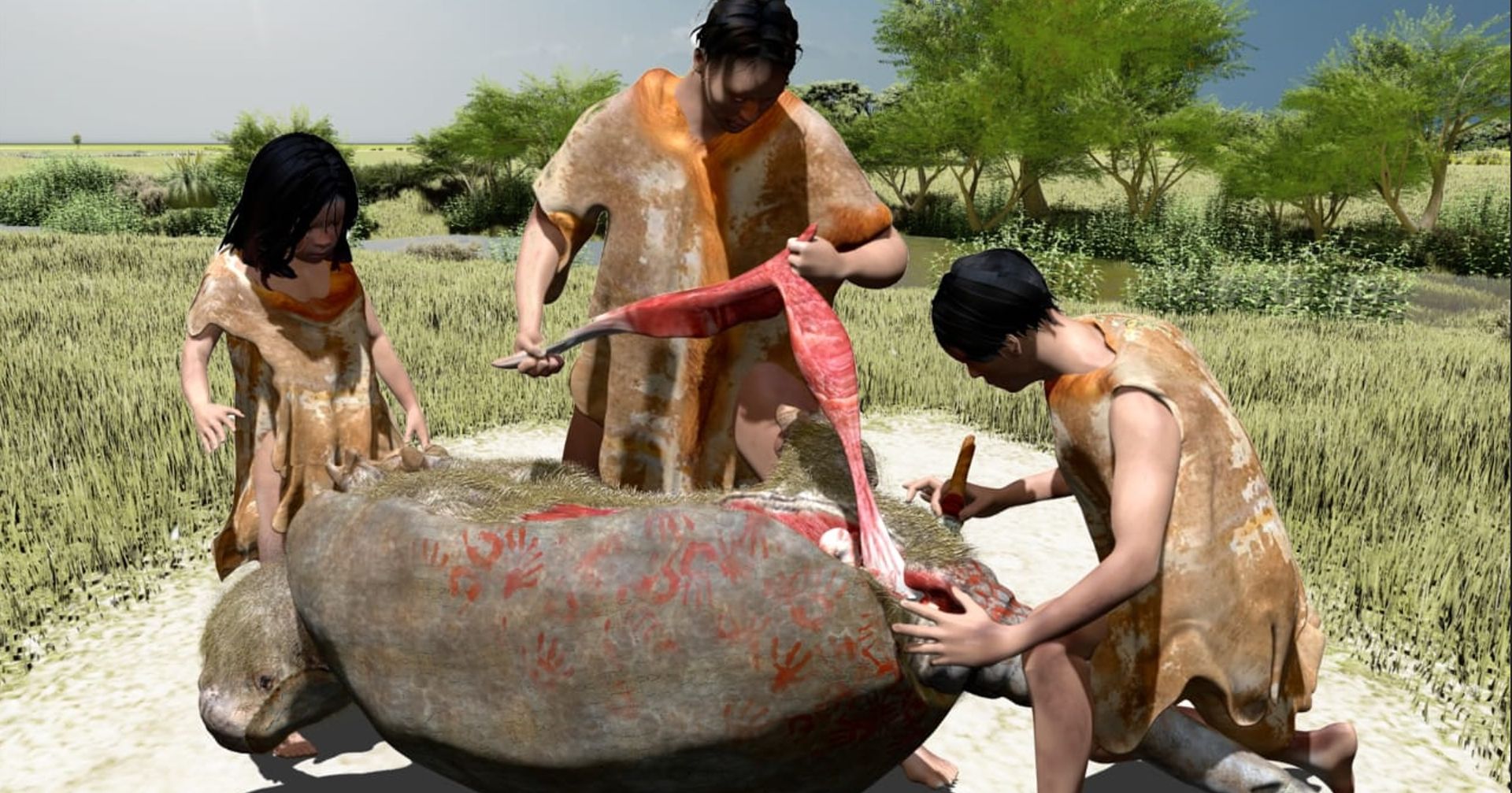Follow us on Google News (click on ☆)

Cut marks were found on the caudal vertebrae of specimen CRS-10: on CV4, a short, deep, V-shaped mark, cut marks, a scraping mark, and elongated V-shaped cut marks; on CV5, cut marks on the neural process, hertzian cones, and a linear mark on the vertebral body; on CV6, linear marks on the left transverse process, with details showing hertzian cones and microstriations.
Credit: Del Papa et al., 2024, PLOS ONE, CC-BY 4.0
Bones of glyptodonts, enormous creatures resembling armadillos, show evidence of cut marks dating back 20,000 years, challenging our understanding of when the first humans arrived on the continent.
During the Pleistocene, an ice age marked by massive polar ice caps, early humans are believed to have arrived in the Americas via a land bridge between Siberia and Alaska, much earlier than the commonly estimated 13,000 years. Recently discovered archaeological sites in North and South America suggest an earlier arrival date.
A study published on July 17 in PLOS One reveals cut marks on the fossilized remains of a glyptodont, discovered in Argentina's Pampas region. These bones of Neosclerocalyptus, dated between 21,090 and 20,811 years ago, represent one of the oldest examples of interactions between humans and megafauna in South America.
The bones found near Buenos Aires include fragments of the pelvis, tail, and carapace. Radiocarbon dating and sediment analysis confirm the antiquity of these remains. To verify the human origin of the marks, researchers used photographs and 3D scans, revealing V-shaped incisions characteristic of stone tool use.

Illustration of a Neosclerocalyptus skeleton showing skeletal elements marked in light blue.
Credit: Del Papa et al., 2024, PLOS ONE, CC-BY 4.0
Researchers ruled out other possible causes for the marks, such as predation or natural erosion, through meticulous analysis of the bones. The sequences of cuts on different parts of the glyptodont's body indicate a sophisticated butchery process, suggesting that the humans of the time used the muscle meat from the pelvis and tail for food.
The study suggests that glyptodonts, weighing around 660 pounds (300 kg), were ideal targets due to their large quantity of meat. This discovery pushes back the human presence and their interactions with megafauna in South America by 6,000 years compared to previously recorded sites.
While this study provides compelling evidence, the lack of tools found at the site calls for further research. The authors emphasize the need to more closely link fossil bones with cut marks and the archaeological record to confirm these findings.

Artistic interpretation of Ice Age humans butchering a glyptodont in Argentina around 20,000 years ago.
Credit: Damián Voglino, Museo de Ciencias Naturales A. Scasso (Colegio Don Bosco), San Nicolás de los Arroyos, Provincia de Buenos Aires, CC-BY 4.0